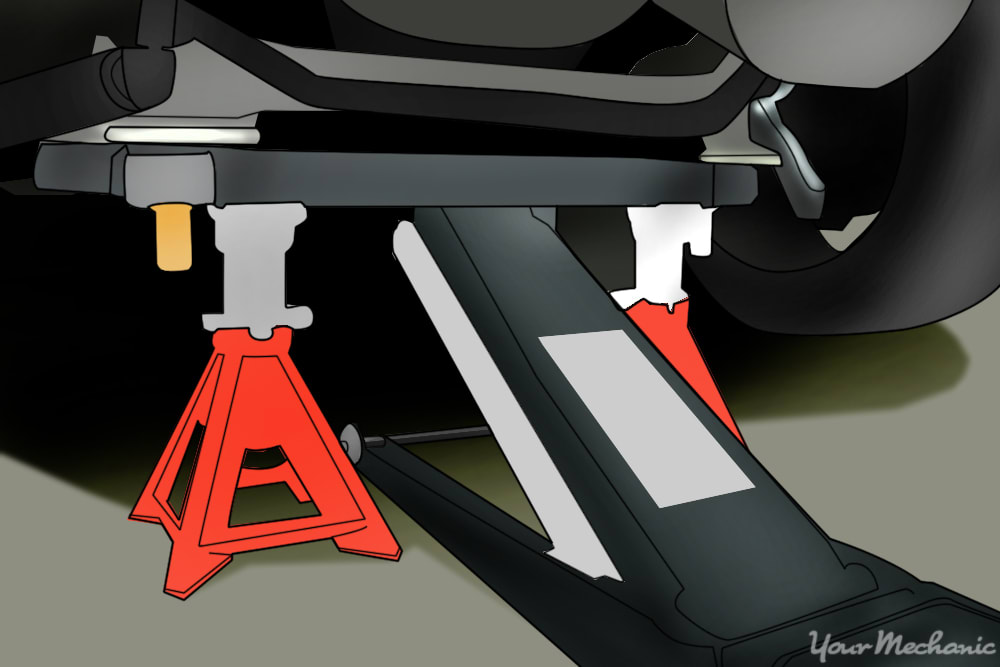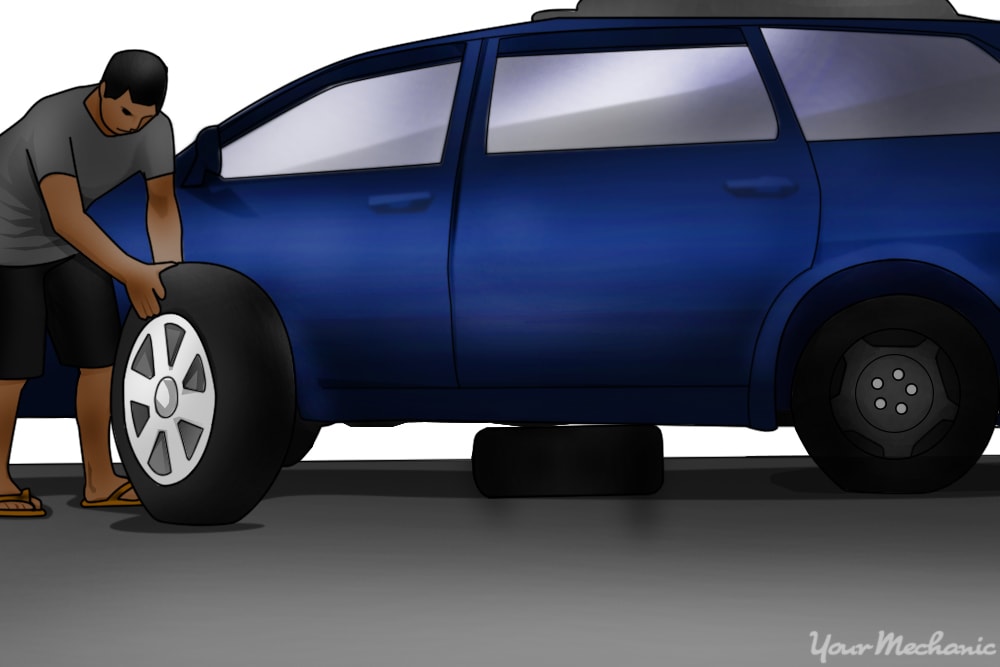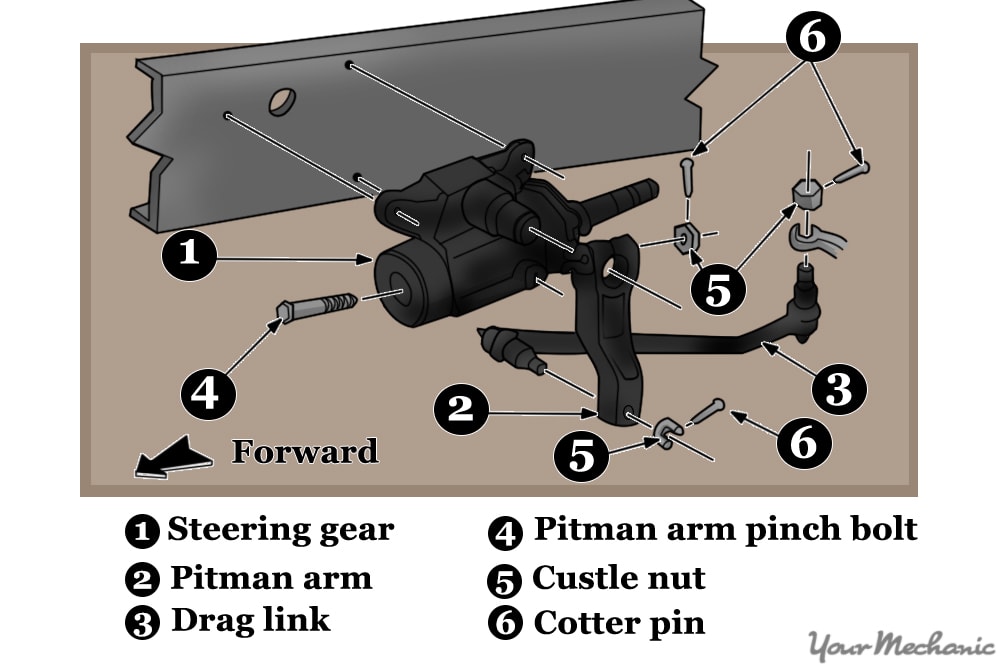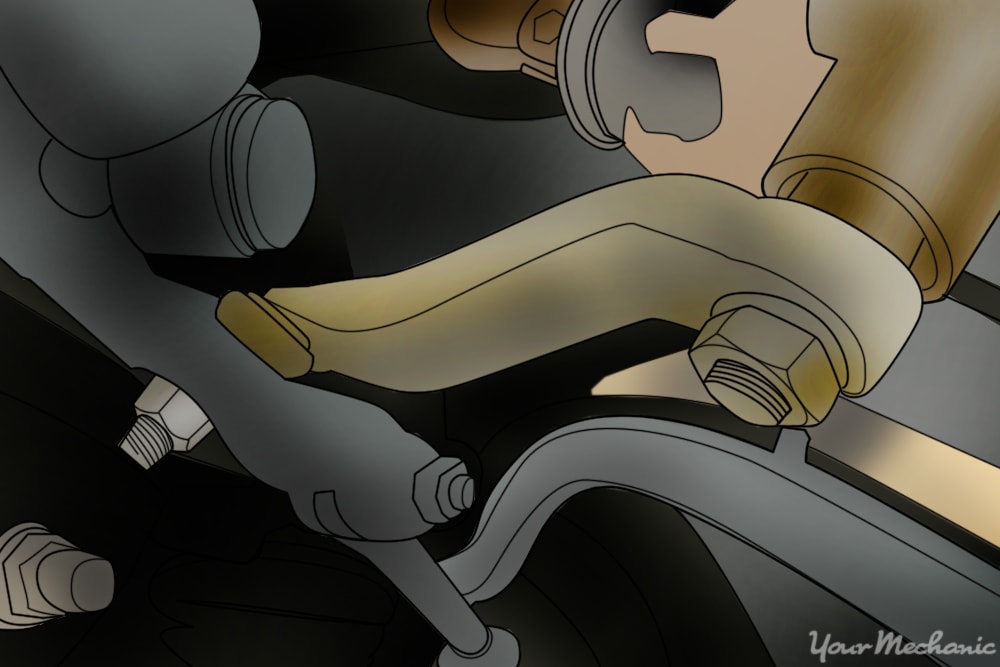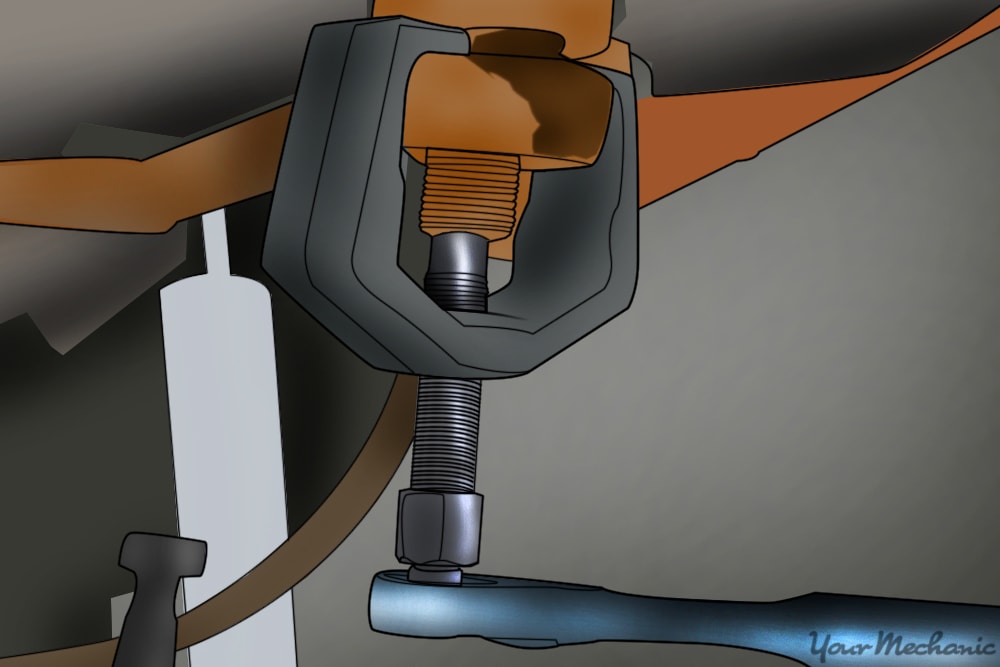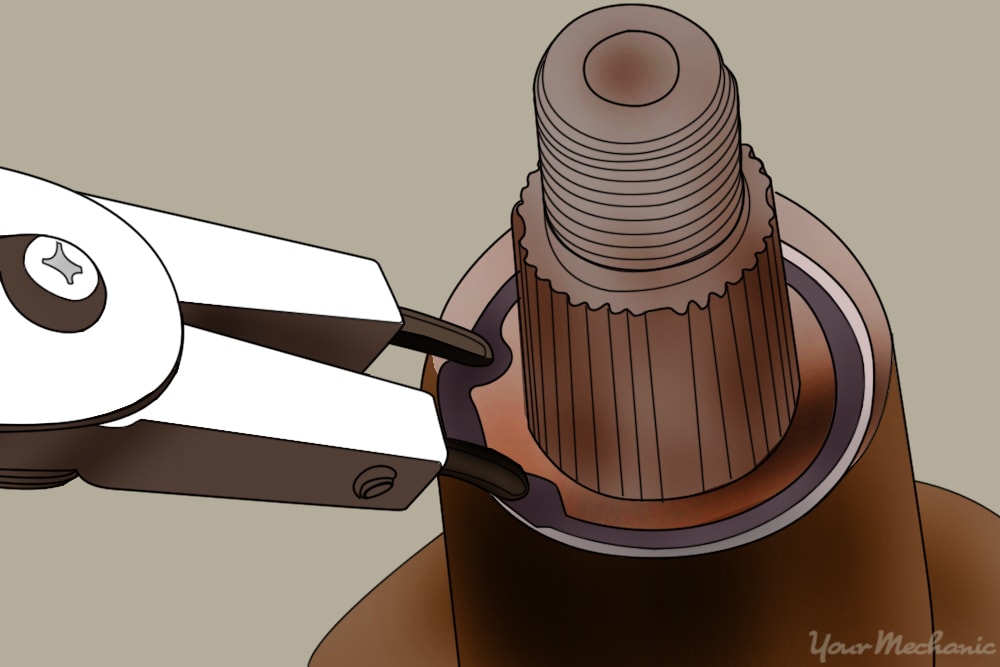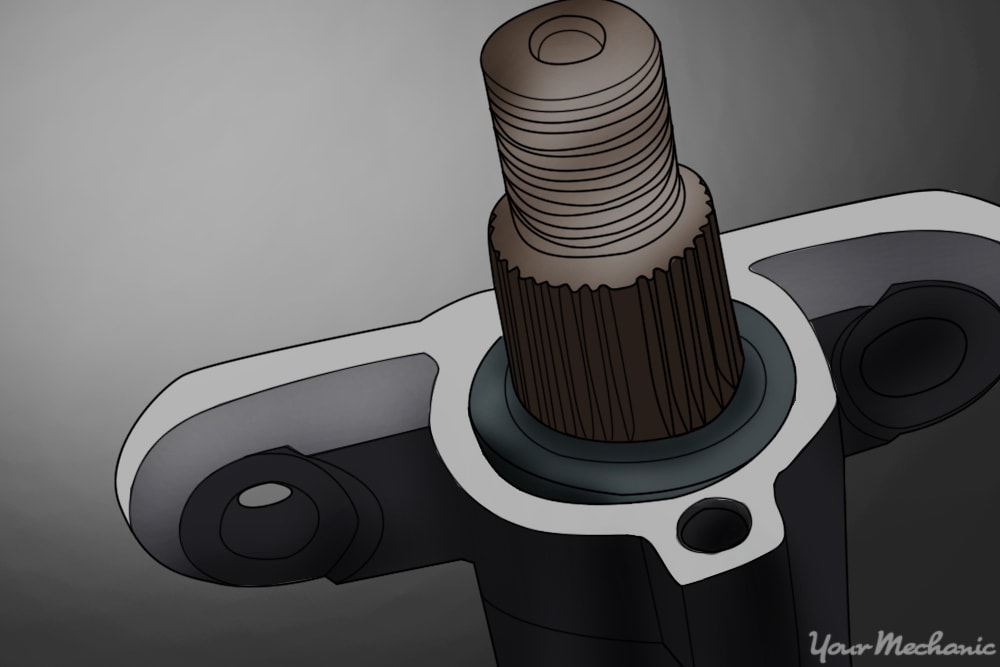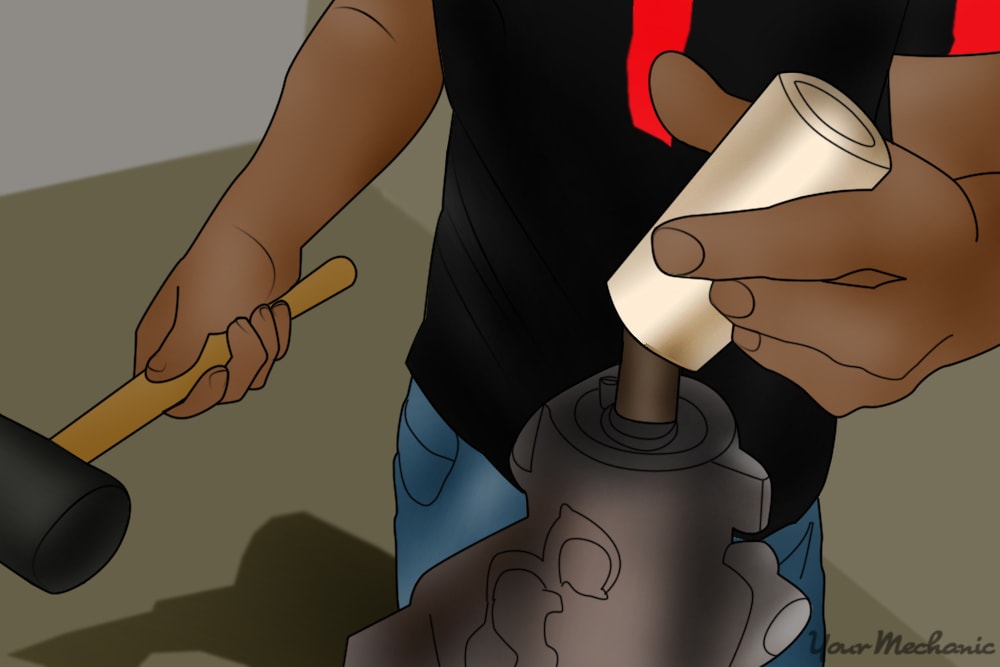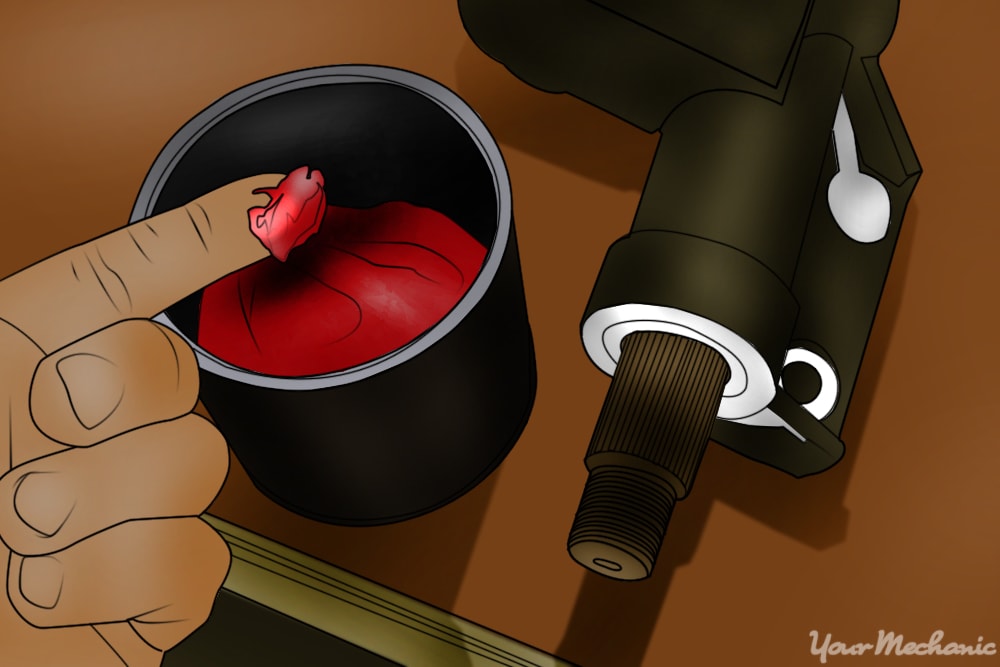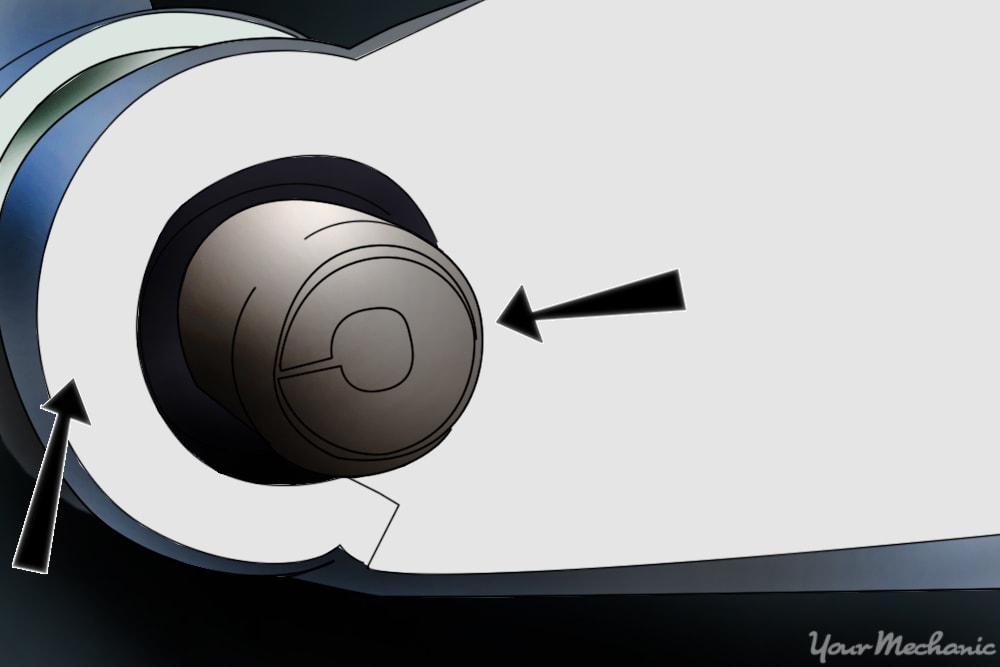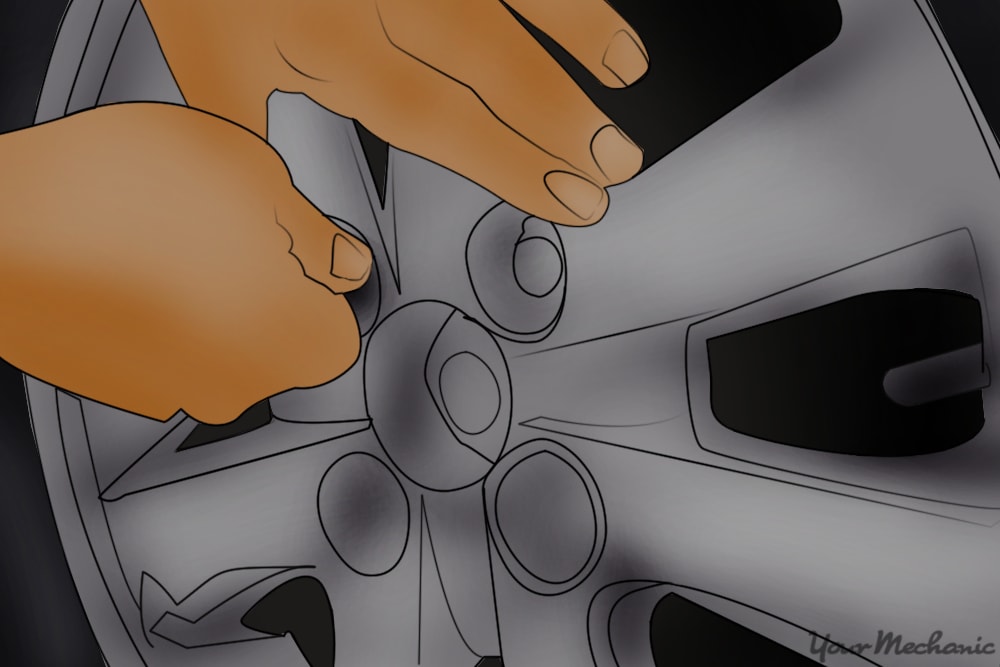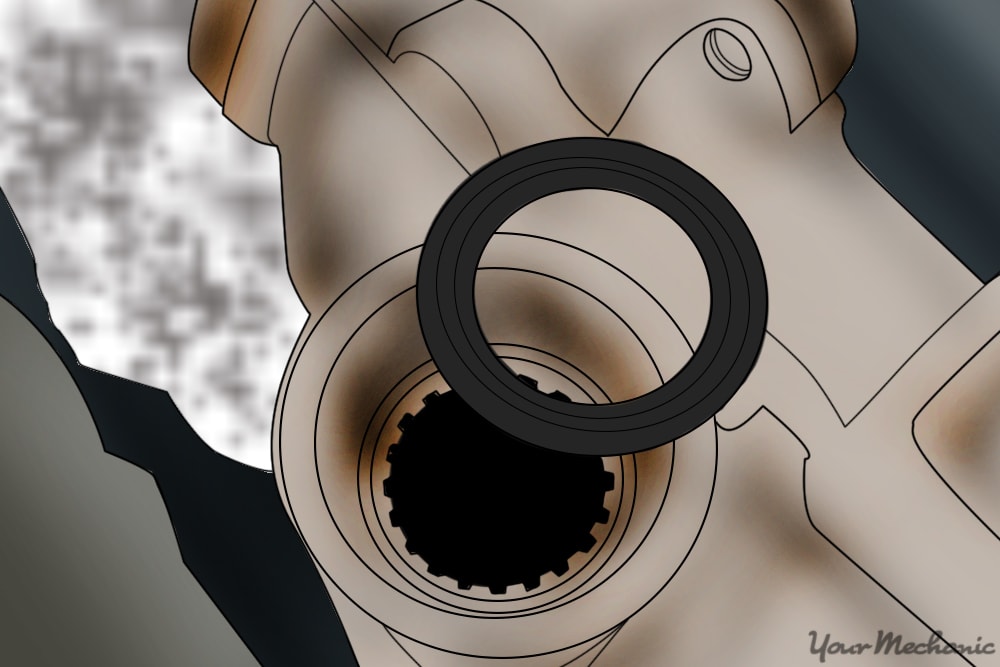

In most vehicles, steering boxes are equipped with a shaft that connects to the pitman arm. This shaft is responsible for sending all force and direction from the steering box to the pitman arm and steering components. The fluid within the steering box must remain inside of the unit, despite the shaft being a potential source of leakage. For this, the pitman arm shaft seal is used. The seal also helps to keep road grime, dirt, and moisture out of the steering box.
Signs of a failing seal include power steering noises and leaks. Should you ever need to replace this part, you can follow the steps outlined in this guide.
Part 1 of 1: Replacing the pitman arm shaft seal
Materials Needed
- 1-5/16 socket
- Breaker bar
- Jack
- Jack stands
- Mallet
- Paint marker
- Power steering fluid
- Replacement pitman arm shaft seal
- Retaining ring pliers (snap ring pliers)
- Screwdriver or small pick
- Socket set and ratchet
- Torque wrench
Step 1: Raise and secure the vehicle. Park your vehicle on level ground. Locate the tire next to the steering box (front left) and loosen the lug nuts on that tire.
- Tip: This should be done before you raise vehicle.Trying to loosen the lug nuts with the vehicle in the air allows the tire to rotate and gives you no resistance to break the torque applied to the lug nuts.
Using your vehicle owner’s manual, locate the lift points on the vehicle, which is where you will place the jack. Have your jack stands ready nearby.
Lift the vehicle. When you have the vehicle raised just above the desired height, place the jack stands under the frame. Slowly release the jack and lower the vehicle onto the jack stands.
Remove the lug nuts and tire next to the steering box.
- Tip: It is a safe practice to place another object (such as the tire you removed) underneath the vehicle in case the stands fail and the vehicle falls. Then, if someone is under the vehicle when this happens, there will be less chance of injury.
Step 2: Locate the steering box. Looking under the vehicle, find the steering linkage and narrow in on the steering box.
Look for the pitman arm connection to the steering box (i.e., the steering gear) and plan out the best angle at which you will be able to access the retaining bolt.
Step 3: Remove the retaining bolt from the pitman arm. To access the pitman arm shaft seal, you must remove the pitman arm from the steering box.
The large bolt connecting the pitman arm to the steering box must be removed first.
The bolt is typically 1-5/16”, but can vary in size. It will be torqued and will most likely need to be removed with a breaker bar. Using the appropriate tools, remove this bolt. After removing the bolt, you must mark the position of the arm in relation to the spline it will be removed from. This reassures the steering will be centered when installing.
Step 4: Remove the pitman arm from the steering box. Insert the pitman arm removal tool into the gap between the steering box and the retaining bolt. Using a ratchet, turn the tool’s center screw until the pitman arm releases.
Tip: You can use a mallet to help in the removal of this end of the pitman arm if necessary. Gently tap the arm or tool to pop it loose.
Note: If you wish to clean the area, once you have removed the pitman arm, you can use a brake cleaner or general automotive cleaner here.
Step 5: Remove the retaining ring. With the shaft exposed, locate the retaining or snap ring holding the pitman arm shaft seal in place. Insert the tips of the retaining ring pliers into the holes of the ring and remove carefully.
Step 6: Remove the old seal. Use a screwdriver or small pick to grab and remove the pitman arm shaft seal from the shaft.
There may be a washer or gasket included, or it may be one unit.
Step 7: Install the new seal. Insert the new pitman arm shaft seal around the shaft. If necessary, take the old seal or a large socket and set it against the new seal. Gently tap the old seal or socket with your mallet to push the new seal into place. Then remove the old seal or socket.
Insert any gaskets as needed in the order they were removed.
Step 8: Install the snap ring. Using the retaining or snap ring pliers, close the ring and insert it into place.
There will be a small notch in the steering box in which the ring sits. Make sure the ring is properly seated.
Step 9: Prepare to install the pitman arm. Grease the area around the shaft where the pitman arm attaches to the steering box. Spread grease down and around the steering box.
This will help to protect against dirt, grime, and water which can prevent the steering linkage from working properly. Apply liberally in the area, but wipe off any excess.
Step 10: Attach the pitman arm to the steering box. Install the pitman arm onto the steering gear by screwing in the retaining bolt which you removed in Step 3.
Line up the notches on the pitman arm to the notches on the steering box as you slide them together. Look for and line up the flat marks on both units.
Make sure any washers are in good condition or new when you install them and that they remain in the same order in which they were removed. Hand tighten the bolt and torque it with a torque wrench to your vehicle’s suggested pressure.
- Note: If there was a loss of power steering fluid before or during the repair, check the level of fluid and adjust as needed before performing a test drive.
Step 11: Replace the tire and lower the vehicle. Once the seal replacement is complete, you can replace the tire you previously removed.
First, use the jack at the appropriate lifting points to raise the vehicle slightly above the jack stands, and then remove the stands out from under the vehicle.
Place the tire back into position and tighten the lug nuts by hand. Then use the jack to lower the vehicle down to the ground. At this point, the tire should be resting on the ground but not yet have the full weight of the car on it.
Use a wrench to tighten the lug nuts as much as you can. Then lower the vehicle completely and remove the jack. Use the wrench once more to tighten the lug nuts if you can to ensure they are as tight as possible.
Step 12: Test drive the vehicle. Turn the vehicle on and keep it in park. Turn the steering wheel clock-to-clock (all the way to the right and all the way to the left). If the wheels respond correctly, the linkage and steering box are functional.
Once you know the steering is functional, drive the vehicle at lower and then higher speeds to inspect the drivability and steering under normal operating conditions.
Something as simple as a seal can cause steering issues and leaks that can lead to even bigger problems. Replacing a pitman arm shaft seal can be done in less than a day and will likely need to be done at least once in a vehicle’s lifetime. By following the steps in this guide, you can complete this job yourself. However, if you would prefer to have a professional perform this repair, you can always contact one of the certified technicians at YourMechanic to replace your pitman arm shaft seal for you at your home or office.



